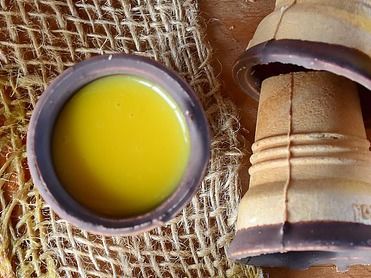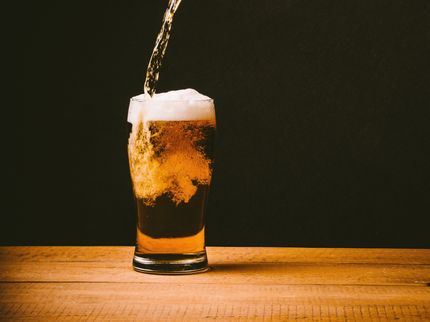How to make cream liqueurs trendy again
Cream liqueurs have struggled to maintain relevance in today’s healthier world. The key to modernizing cream liqueurs’ image is to persuade more drinkers that the beverage is worth spending their precious calories on. That means making cream more of a hero ingredient.

RitaE/ Pixabay
Cream liqueur brands have often ignored the cream, perhaps wary of drawing attention to an ingredient associated with high fat content. Brands can take inspiration from how other categories such as artisan ice cream or gourmet butter communicate the quality of their dairy produce.
Cream of the crop
Spirit brands are focusing more on the quality and purity of their core ingredients. This attracts a craft-influenced modern drinker who seeks quality over quantity and ingredients free from artificial preservatives.
However, few cream liqueurs celebrate the quality of their cream beyond fairly generic descriptions like ‘fresh,’ ‘real,’ ‘smooth’ or ‘luscious.’ When cream liqueurs focus on quality ingredients, it tends to be added flavors.
Cream liqueurs can take inspiration from how artisan ice cream and gourmet butter brands communicate the quality of raw dairy ingredients. Some brands focus on the importance of happy cows for ethics and quality such as Ben & Jerry’s Caring Dairy, or how process can raise quality such as small-batch churned butter.
Making indulgence more permissible
Cream liqueurs can also introduce more product lines that cater to permissible indulgence. A classic example is Baileys Almande, which taps into the Millennial-driven trend for free-from products. Mintel Purchase Intelligence shows Baileys Almande under-performs other cream liqueurs on consumer perceptions of ‘taste,’ but outperforms on perceptions of ‘healthy’ and ‘natural.’ In other words, Almande lacks the mainstream appeal of Baileys Original but appeals to a sizeable target of health-motivated drinkers seeking permission to indulge.
Among US alcohol buyers, cream liqueurs as a whole are viewed as stronger on ‘taste’ than all alcohol launches, but lower on better-for-you credentials such as ‘natural,’ according to Mintel research.
Among US alcohol buyers, cream liqueurs as a whole are viewed as stronger on ‘taste’ than all alcohol launches, but lower on better-for-you credentials such as ‘natural,’ according to Mintel research.
Creating a ‘Halo Top’ effect
Ice cream brand Halo Top’s success suggests cream liqueurs can find a middle ground between indulgence and health. Halo Top tubs have 240-360 calories per pint versus 1,000+ for Häagen-Dazs ice cream. Sales numbers also back up Halo Top’s claims to deliver on taste. Halo Top was comfortably IRI’s top-selling 2017 ‘pacesetter of the year’, earning $324 million in US retail year-one sales.
How does Halo Top deliver on the holy grail of healthy yet tasty ice cream? It uses 3% fat, which is less than standard ice cream, but not so much less that consumers can tell the difference. A study from the Journal of Dairy Science showed consumers were unable to detect a fat difference of up to four percentage points. The study’s author argues when healthier ice creams aren’t successful, it is usually because they strip out too much fat which impacts taste perceptions.
Sugar replaces cream as the main barrier to liqueurs
The cream in liqueurs is a big contributor towards the perception of high calories but the sugar content that makes them so sweet-tasting also plays a large role.
Sugar has become ‘public enemy number one’ due to studies that link it to negative health outcomes, such as obesity, diabetes and tooth decay. Sugar concerns has led some governments to impose soda taxes and a liqueur sugar tax is potentially a future threat.
Ironically, just as anxiety around sugar increases, concerns about high fat products –like cream– recede. Looking ahead, the key for cream liqueurs is creating a cream liqueur with reduced sugar content, but just enough full fat cream to meet indulgent needs.
Modernizing cream liqueurs also means tapping into cocktails
Cream liqueur brands are tapping into current cocktail trends, which has become a key entry point for younger drinkers. For example, Baileys has promoted its cocktail versatility so it can move away from an over-reliance on Christmas sales. With coffee cocktails trending, Baileys has placed its Flat White Martinis onto restaurant dessert menus. It has also used social media to tap into the alcoholic milkshake trend.
What we think
Cream liqueurs should not hide from their indulgent status, but should make sure they are perceived as ‘worth the calories.’ This means a greater focus on the quality and purity of the cream itself. Cream liqueurs also need to cater more to occasions when drinkers are seeking permissible indulgences, which means extending further into lower sugar and free from brand extensions.





























































